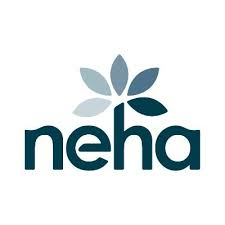
Wellth, a digital health startup that offers small financial rewards for completing health-related tasks, recently announced the appointment of former Sanford Health Plan CEO John Snyder as its new chief operating officer.
Snyder sat down with MobiHealthNews to discuss how his experience will influence his decisions around overseeing company operations and where and how he thinks Wellth can expand its offerings.
MobiHealthNews: Tell our readers about your new role at Wellth.
John Snyder: I’m the chief operating officer, so, really, responsible for all the operations, be sure things are running efficiently and effectively – being sure we’re interfacing well with our clients, providing them the necessary information they need, both as they send us data, and as we provide stuff, and responsible for HR, you know, people management, things like that. So, as you would expect, the chief operating officer is kind of, you know, responsible for everything running.
MHN: How does your experience at Sanford influence how you will help Wellth?
Snyder: So, I’ve got a lot of experience in, more than I want to admit, in just healthcare leadership, probably close to forty years, and mostly C-suite, between on the provider side – I was chief operating officer of a big system – and then CEO of two health plans.
So, obviously, I think that depth and breadth of experience from an operations perspective will help me be sure that we’re running as effectively as we can. The advantage of coming from the health plan side is that I was a customer, and I know health plans really well. So, as we think about it at Wellth, how do we relate to health plans, not only as clients, but how they think, how they operate, how can we better help them? I’m just well-positioned to do that.
MHN: What is it about the company that stands out to you as far as being able to make a difference within the digital health space, and how is the use of AI going to help Wellth stand out?
Snyder: The things that stood out to me, again, as a customer, I used to tell my team I wanted to execute on as many digital enablers, as I like to call them, as possible, because I think they’re the future of really being able to manage risk if you will.
When I say manage risk, that’s what health plans do. They manage, hopefully, to keep you well, so they keep you out of the hospital, keep you out of the doctor’s office inappropriately. There are some times that obviously are appropriate. And the more you can interact with members to change their behaviors, then you have a chance for success.
And there are so many digital apps that just push things to people as reminders, and which are helpful, but they don’t necessarily move the dial like I saw Wellth move the dial and using economic behavioral modification really works. I saw it work at Sanford. The data is very compelling in that, not only do you get people engaged at two times, three times what most digital apps would see, but a retention rate that’s, again, probably even higher for your digital applications.
You think about people who have significant issues, are in the hospital a lot. They’ve already kind of tipped over, unfortunately, into that high-risk, and all you can really do is try to be sure you get them in the right care continuum. But there’s this big group in the middle that is emerging risk, and if you can use tools like this to manage it so they don’t get to that other side, that’s a real game changer – not only for a health plan from a financial perspective but more importantly, for those members and patients, because it keeps them well.
MHN: How will you ensure that Wellth is sustainable within the digital health space when many companies are either running out of investment runway or being acquired by more prominent players? How will you ensure the company prospers in this volatile digital health market?
Snyder: Again, I come from that role that I know the pain points, and the answer is you’ve got to alleviate the pain points as much as you can. One of those is just the incredible lift to execute these things.
Just being sure the data comes across right, it reads right, it is in the right field, all of those things are just an incredible tech lift, and Wellth does a really good job of, I think, simplifying that much differently than others.
And then I think a lot of times when you think about these digital applications, the companies are kind of looking to the health plan, who do you want us to enroll in this app, if you will, or whatever the application is? And Wellth does just the opposite: Give us your data. We’ll tell you who we know we can get the biggest ROI from and the biggest return for you, and then also the biggest return for the member.
The other difference is just the app; it engages people. People are interested. Part of our unique secret sauce, if you will, is just how we activate people, how we actually call them and get them signed up for the app, and help them get the app installed, help them understand how to use it. A lot of times, people just don’t get that kind of touch, if you will, and it makes a big difference.
So, all those things have to come together, and I think those are the things that help make it work, and we just need to kind of capitalize on those things and even be better at those things.
As far as what other folks are doing, I think it’s an ever-evolving market, if you will. And I think we just need to be very cognizant of what other people are doing and be sure we do it better.
MHN: I assume you’re coming on board with an appreciation for the company’s business model, but do you have ideas on how to improve it?
Snyder: Yeah, that’s a great question. You know, being the new person, I’ve already kind of asked some of those questions.
It’s a great platform, but it’s a platform that can be used for lots of other things and lots of other lines of business. And so, I think, you know, as we think about the future, how do we use that basic platform? How do we use that foundation that makes it work so well but apply it in other areas?
Some of the things that we’re looking at are maternal and baby health. Is there an application there? There are things we can probably do there: care continuum things, care gaps.
Again, I’m hopeful that is something I can help with as we get more mature and think about, as we develop a product, you know. I’ve got that health plan background, but I’ve also got a healthcare background pretty significantly in the hospital and clinic setting as well. So just thinking about all those different places, those different markets and all those different lines of business.
Credit: Source link














